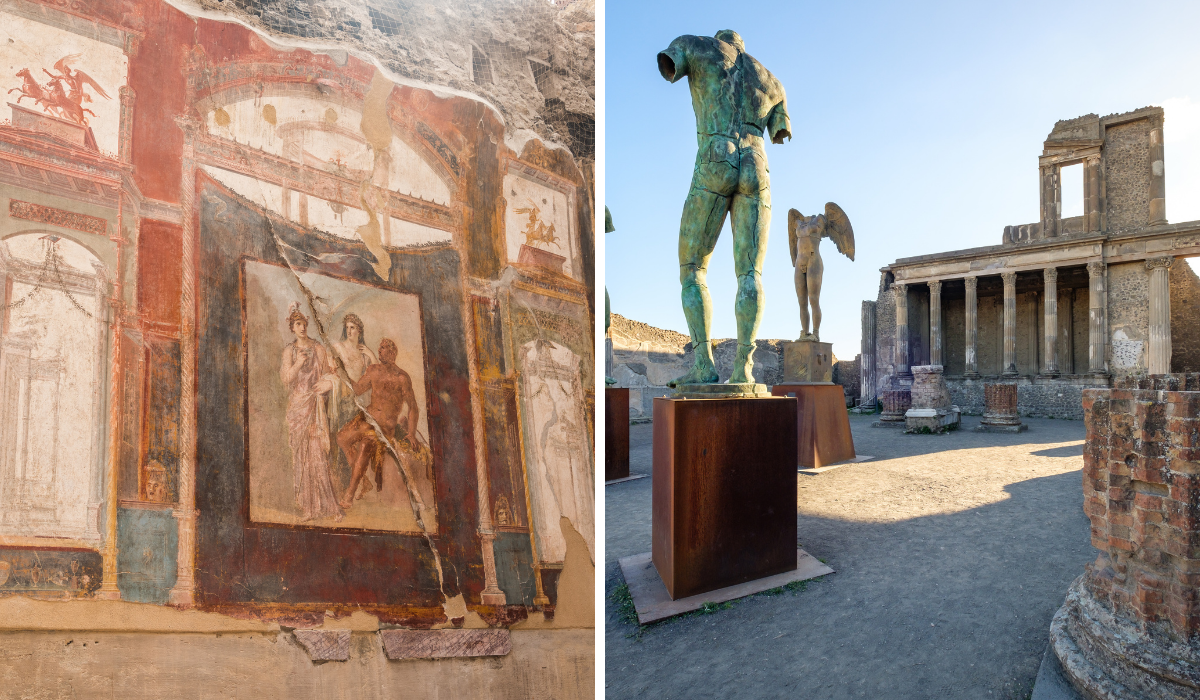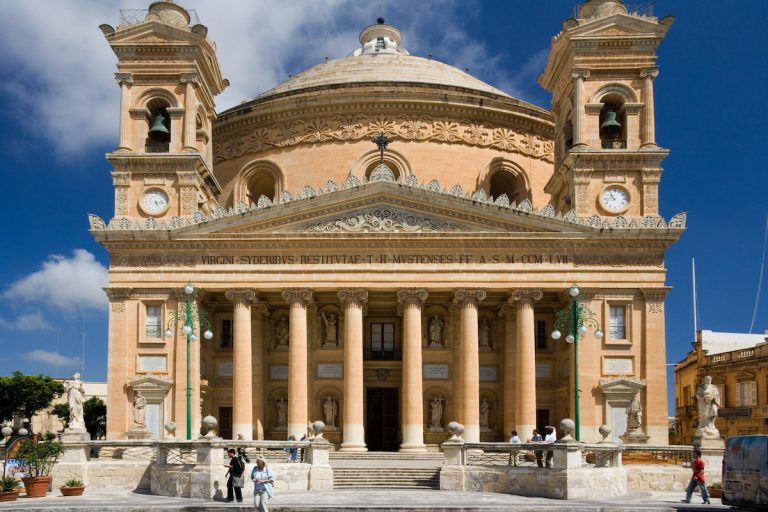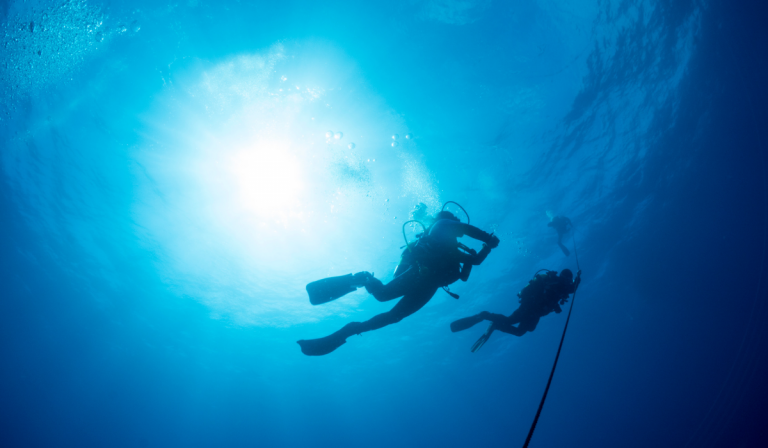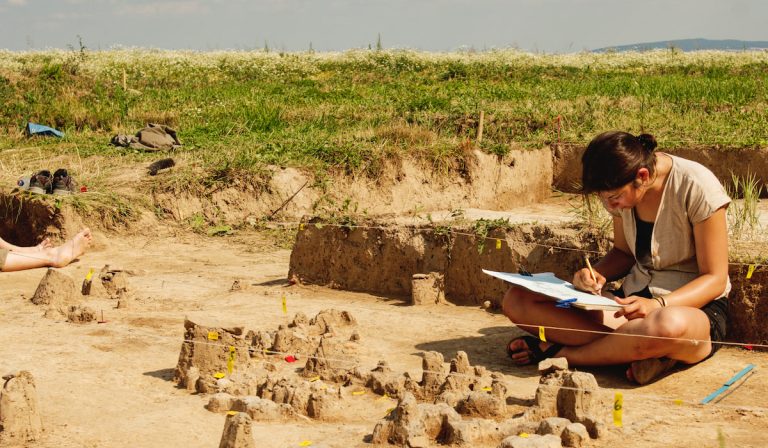Herculaneum vs. Pompeii Compared: Which Is Better to Visit?
Our planet Earth is wonderful as there are many places to visit. You will surely enjoy life to the fullest if you are a traveler. A popular country to visit is Italy because it is a hotspot of various tourist centers and the epicenter of ancient history. For example, the famous cities of Herculaneum and Pompeii are in Italy. What are these cities like and which should you visit?
Both Herculaneum and Pompeii are popular Italian destinations. They are both in Italy’s South and are very popular because of the volcanic tragedy that befell them in 79 AD. Today, both cities tell us about the ancient world of the Romans, and we have a lot to learn from them.
What tragedy befell Herculaneum and Pompeii? If you have the chance to visit either, which is better? Continue reading.
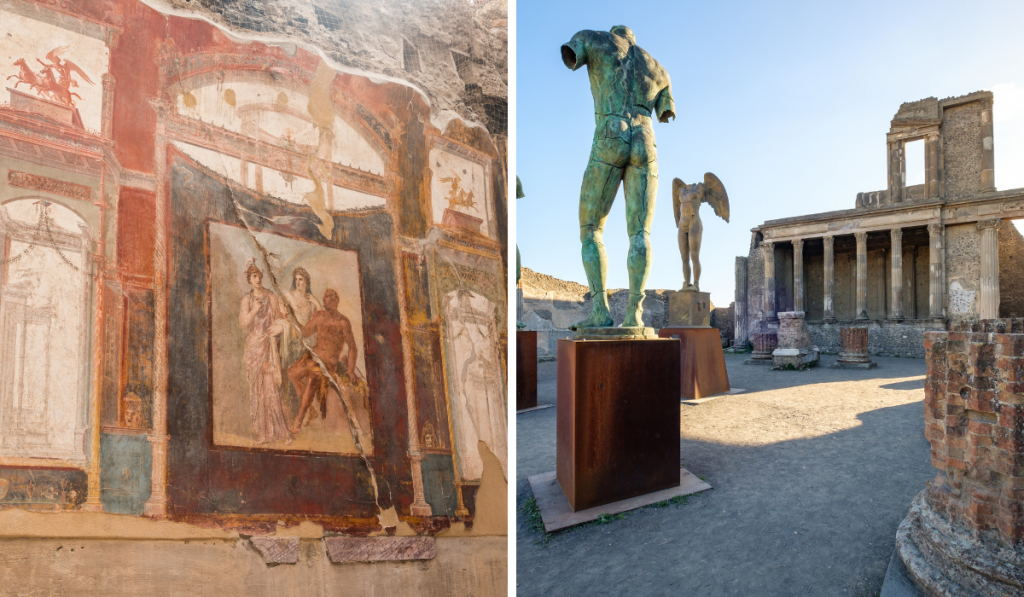
What Are the Differences Between Herculaneum and Pompeii?
It may occur to you that most people who visit Pompeii end up visiting Herculaneum as well (and vice versa). This is because both cities are not far from each other, and the same calamity befell them simultaneously. This means that you cannot mention one of the cities without mentioning the other.
To decide the best for you to visit, you need to know their differences to get a better insight into what to expect. Here are the major differences between Herculaneum and Pompeii:
1. Specific Location
First of all, you should note that both cities were destroyed by the volcanic eruption of Mount Vesuvius on October 24, 79 AD. The specific location of both cities determined the manner in which they were entombed.
Pompeii is twice as far from Mount Vesuvius as the city of Herculaneum. Mount Vesuvius is northwest of Pompeii. Later in this article, you will learn why this matters.
If you would love to visit either Herculaneum or Pompeii, the place to visit first might depend on where you are coming from. Herculaneum is nearer to Naples, while Pompeii is nearer to Sorrento/Positano.
2. Effect of the First Volcanic Phase
Here comes the first tragedy. When Mount Vesuvius erupted in 79 AD, it destroyed both cities in different ways. The eruption occurred in two phases and while both phases were dangerous, they did not have the same effect on Herculaneum and Pompeii.
The first phase of the Mount Vesuvius eruption was a combination of a column of gas, volcanic ash, and rocks in the air. These elements went in the southeastern direction and destroyed Pompeii from above, just like rain. The elements injured and trapped people while destroying their buildings from the top down.
Even though the city of Herculaneum was nearer to Mount Vesuvius, the elements from the mountain did not go toward the city, so many inhabitants could escape.
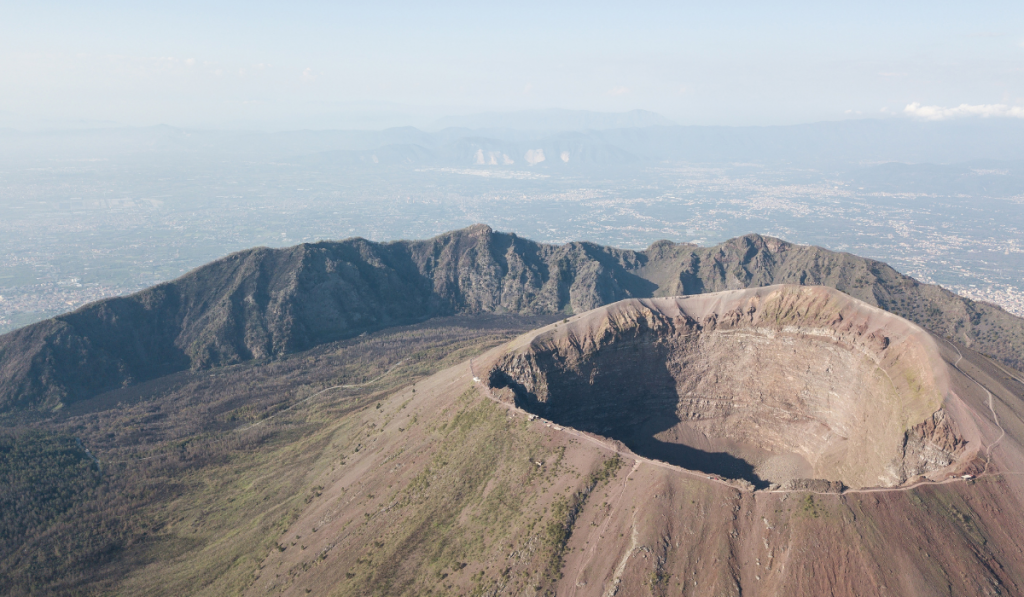
3. Effect of the Second Volcanic Phase
The second phase of the Mount Vesuvius volcanic eruption was a pyroclastic flow of lava. Lava and gas were expelled from the mountain at speeds that may have reached 400 miles per hour. There was no way to outrun the flow once it had started.
Herculaneum is nearer to the mountain, so the pyroclastic lava and gas flowed quickly and buried it in ash. The Mount Vesuvius eruption buried the city of Herculaneum in over 80 feet (25 meters) of ash. As for Pompeii, 13-19 feet (4-6 meters) of ash covered the city. This also affected the discovery of both cities, which we will discuss later.
4. State or Condition of Victims in Both Cities
If you get the chance to visit either Pompeii or Herculaneum, you should notice that the remains of people in the two cities are different in their appearance. While the bodies of Pompeii inhabitants are man-made plaster casts reflecting the imprints left behind by the actual bodies buried in the ash, real skeletons are present in Herculaneum.
The reason for this difference is how the Mount Vesuvius eruption destroyed both cities. Remember that people in Pompeii were trapped in buildings. The resulting ash layers allowed oxygen to reach the entombed bodies and other organic matter, so decomposition could occur, leaving hollow cavities behind. Archaeologists were then able to fill the cavities with plaster to re-create casts of the bodies. These casts are what you see in Pompeii.
As for Herculaneum, most people survived but were trapped by the fast-flowing pyroclastic lava as they tried to escape the disaster. Their flesh could not survive, but the skeletons did because of the properties of the lava and gases they were encased in.
5. Discovery of the Two Cities
There is a difference in the time of discovery for both cities. Domenico Fontana first discovered the city of Pompeii in 1559. He did not widely reveal his find and reburied the sites he unearthed. While we do not know his exact reason, historians believe what he saw were some of the more erotic scenes from the ancient brothels, and he was disturbed by the findings.
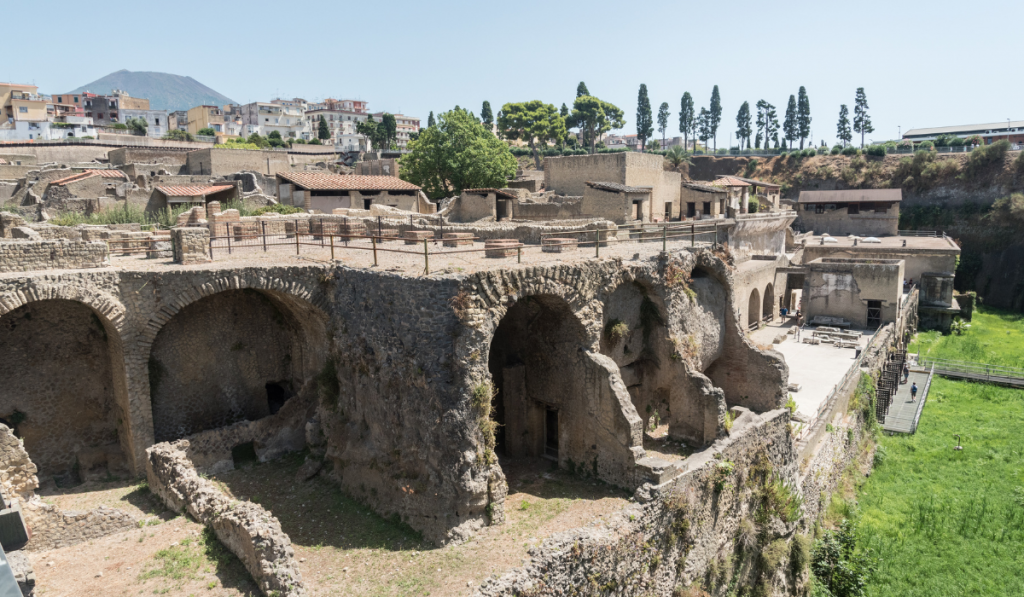
Pompeii was rediscovered and then evacuated in 1748. As for Herculaneum, Prince D’Elbeuf was the first to unearth the city, but excavation only started about a hundred years after that of Pompeii because of the difficulty of the site. Remember that Herculaneum is far deeper in the volcanic ash than Pompeii.
Because Herculaneum is around five times deeper in the volcanic ash than Pompeii, it is not surprising that Pompeii was discovered first. Today, we are still learning more from Herculaneum, and most of it remains covered underneath the present-day city of Ercolano.
6. The Surviving Buildings
There is also a difference in the visible structures in Pompeii and Herculaneum.
Remember that what mostly destroyed the city of Pompeii was the first phase of the eruption, which rained harmful elements from the sky. These elements mostly destroyed the upper parts of Pompeiian buildings.
Pompeii’s buildings were affected more, and none of them has any upper level because of how they were destroyed. When you go to Pompeii today, you will see a lot of topless buildings.
As for Herculaneum, the buildings still look new because the lava, ash, and gas flow helped preserve them.
The wall frescoes in Herculaneum’s buildings still look new and show bright, well-defined colors. The tiles still look fresh and splendid. This means that if you want to get a clearer view of how the past world was, you should visit Herculaneum.
7. State of Discovered Artifacts
Do you know that the people of Herculaneum used paper? In 1750, people who dug wells discovered the Villa of the Papyri in Herculaneum. In this villa, there were over 1800 scrolls. The scrolls have revealed much about the civilization of the ancient world.
Most of the scrolls contain text from the ancient Greek philosopher Epicurus. They also contain poetry and records. Archaeologists used advanced computerized NASA techniques to extract the contents of the scrolls.
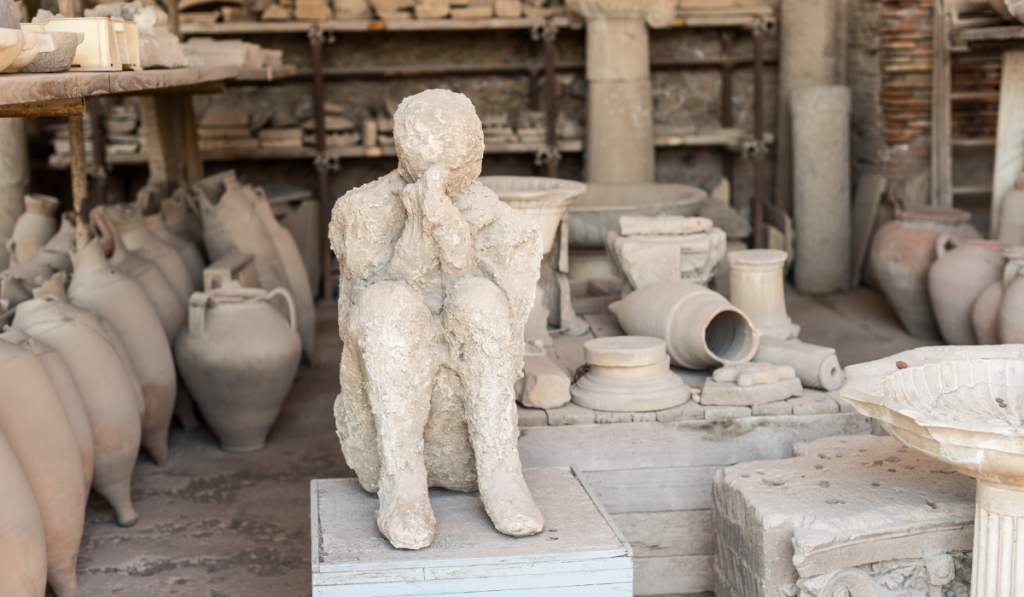
Aside from scrolls, you can also find some organic materials such as wooden shelves, staircases, and doorframes that are yet to decompose. This is because the layer of ash prevented oxygen from reaching these items, and oxygen is a major factor in decomposition.
In Pompeii, it is difficult to find organic items that are yet to decompose as they are scarce. This means that Herculaneum was well-preserved because of the flow.
Now you know the differences between Herculaneum and Pompeii. Let us briefly discuss their similarities before you decide the best for you to visit.
Are There Similarities Between Herculaneum and Pompeii?
Aside from the fact that both cities are from the same region in Italy and not so far from each other, their major similarity is that they both got destroyed the same day (2000 years ago on October 24, 79 AD) by the eruption of Mount Vesuvius.
Another similarity between the two cities is that their artifacts are well-preserved, as you can see cups and other items. We have a lot to learn from these cities, and thanks to the volcanic ash which covered the cities, we can clearly see some crucial details.
Which Should You Visit Between Herculaneum and Pompeii?
Why do you need to decide the city that you should visit between Pompeii and Herculaneum?
1. Consider the More Famous City
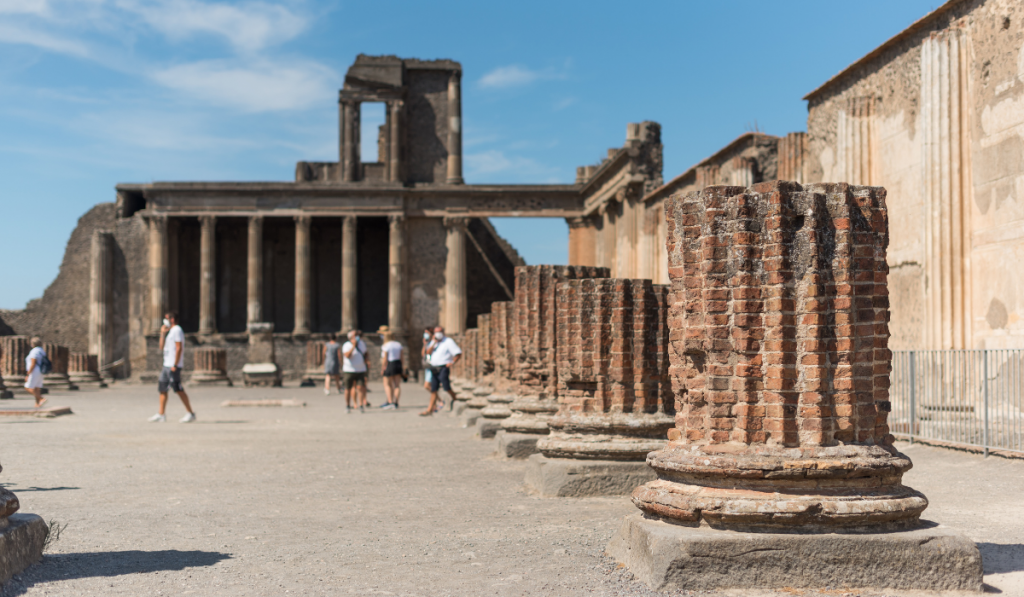
Pompeii is by far more famous than Herculaneum. Pompeii was discovered earlier, and the city’s excavation received support from famous travelers such as the German poet, J.W.Goethe. An American writer, Mark Twain, also supported the project.
Herculaneum only came after Pompeii had already received popularity and was not so popular at the time of discovery, so it will likely be known by many as “the city near Pompeii.”
2. Consider the City with Better Preserved Artifacts and Sites
If you are more interested in the details or definition of the artifacts, you should visit Herculaneum because more artifacts were well-preserved. You also get to see organic materials that are yet to decompose in the city, even though others have decomposed in Pompeii.
3. Consider the Size of the Two Cities
Pompeii is by far a larger city than Herculaneum. Pompeii was more like a public and private city as residential and non-residential buildings can be seen. In Herculaneum, however, you should mostly see residential buildings, which indicate a private lifestyle. If you want to get a better picture of the ancient world, you should visit Pompeii.
4. Personal Factors to Consider
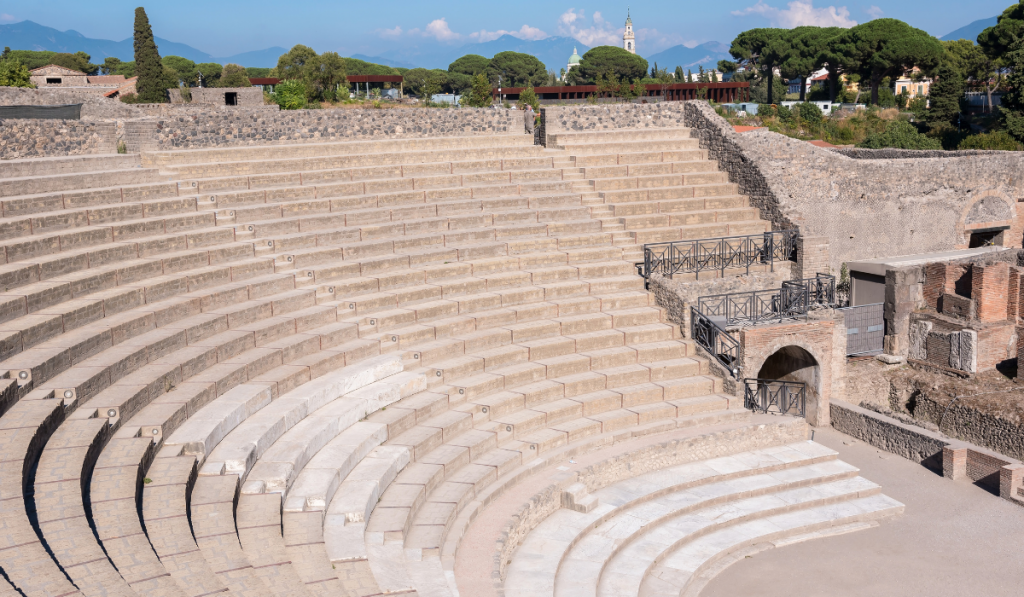
There are so many things that you should consider. For example, how much time do you want to spend on the tour? You can use two hours to see most of the places in the city of Herculaneum, but you need more time to walk Pompeii thoroughly. If you will be walking with aged co-travelers or young children, you should visit Herculaneum.
If you and your co-travelers are more interested in seeing everything at once, you should visit the larger city of Pompeii or try to visit both cities.
5. Try Visiting Both Cities
This is always an option. Why choose one when you can visit both? You should get the most out of your tour by visiting both Pompeii and Herculaneum. Though walking the journey can get tiring at some point, you will surely enjoy the sights. Remember to go with snacks so that you can fill up your energy along the way.
Which city would you like to visit between Pompeii and Herculaneum?
Final Thoughts
Herculaneum and Pompeii are both cities that faced the same tragedy at the same time. They shed light on the past, so even though we weep for the inhabitants of the cities, we are learning about the past from what we find in the cities today.

